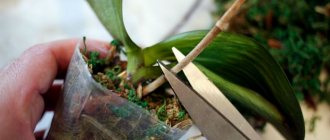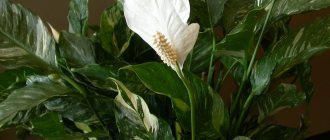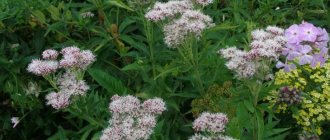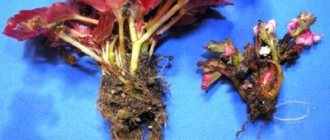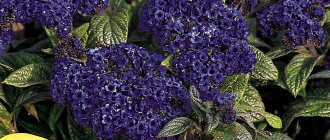In warm countries, there are no problems with the formation and opening of generative buds; where the climate is unsuitable for the crop, the owners have to create suitable conditions for this artificially.
Botanical description
The bitter orange tree (bigaradia, Latin: Citrus aurantium) is an evergreen plant belonging to the genus Citrus of the Rutaceae family (Latin: Rutaceae). It originates from the Eastern Himalayas, but its classic wild varieties are unknown. According to scientists, bitter orange was cultivated in China 4 thousand years ago.
At 10 tbsp. the trees were brought by Arab and Portuguese sailors to the Middle East, from where they spread throughout the Mediterranean. They are also cultivated in Central America.
Bitter orange is a tree reaching a height of 10 m, decorated with green elongated leaves and white fragrant flowers, which are arranged singly or in bunches of 5-10 pieces. As you can see in the photo, the orange flower is snow-white, consisting of a five-part, slightly opening perianth and thick segments, inside of which there are many stamens.
The fruits are round in shape with a thick, rough skin and become orange-red when ripe. The pulp of the fruit is bitter and sour and is not eaten in its pure form, but is successfully used for making seasonings, liqueurs and marmalade. Its tasty variety (sweet orange) was developed only in the 16th century.
The French name for the orange flower is orange blossom (Fleur d'orange). It gives the plant charm and glamor. The flowers have a characteristic sweetish aroma. Some experts compare the fragrance of such flowers with jasmine, but enhanced by honey and more tart shades. Others associate the aroma of orange blossom with notes of rubber and indole.
History of the origin of the orange
Scientists from the USA, Spain and France studied the origin of the Citrus genus. Research results showed that the first citrus trees appeared in Southeast and South Asia, then “migrated” to subtropical and tropical countries. As a result of cross-pollination, lemons, oranges, limes, grapefruits and tangerines appeared.
DNA studies helped establish the approximate period of appearance of citrus fruits - about 8 million years. This is confirmed by the found fossils dating back to 8-6 million years BC. e.
A Chinese manuscript dated 1178 describes 27 varieties of oranges and tangerines.
Scientists suggest that the orange is the result of crossing a mandarin and a pomelo . The birthplace of the orange, like other representatives of citrus fruits, is Southeast Asia. The fruits have a special structure and are called hesperidia, like tangerines. The fruits of the orange tree received this name from the Greeks. One of the ancient Greek myths describes the garden of the daughters of Atlas - the Hesperides. It was there that fruits called golden apples grew.
The sweet orange came to Europe in the 15th century, thanks to Vasco Da Gama . According to one version, it was he who brought the citrus tree after traveling to India in 1429.
There is another version, according to which Europeans became acquainted with oranges thanks to the crusaders, who brought them from Palestine along with lemons.
Until the 18th century, oranges were grown only in greenhouses in London, Paris, and St. Petersburg. In Spain and Portugal, attempts were already made to grow trees in open ground, especially since the climatic conditions allowed.
Spanish and Portuguese colonialists contributed to the spread of the plant to Central and South America and West Africa . So the orange gradually conquered new territories and became the main fruit crop in the tropics and subtropics. Wild forms of the plant have not been found in nature.
Reference. The most extensive orange plantations are located in Brazil, Iran, Spain, India, USA, Mexico and China.
origin of name
There are several versions of the origin of the name of the plant:
- Some researchers suggest that the name of the fruit comes from the English apple of sin - “apple of sin” or Adam’s apple. Scientists are sure that in the Garden of Eden Adam ate not an apple, but an orange. Other researchers of the etymology of the name see in this only an accidental phonetic consonance.
- Most linguists are inclined to believe that orange is a “Chinese apple”, translated from Dutch appelsien (appel - apple, sien - China).
Is it a fruit or berry
Is an orange a fruit or a berry? According to the botanical description, an orange cannot be called a berry or a fruit . In the scientific literature, the fruits of the orange tree are hesperidiums, multi-seeded, multi-locular fruits, but in structure they are still close to berries. The pulp is covered with a bright orange peel. These are characteristic features of other representatives of the Citrus genus: lemon, tangerine, grapefruit and pomelo.
Interesting things on the site:
Using tangerine peels for maximum benefit
Health benefits and harms of tangerines
What is pomegranate, is it a citrus or not?
Essential oil
Processing orange blossom flowers gained popularity during the Renaissance. Even then, the method of steam distillation was invented, with the help of which they learned to obtain essential oil from orange flowers. It is called “neroli” and is a colorless liquid that emits a light floral aroma with hints of bitterness.
Neroli oil has a complex composition, the main components of which are inalyl acetate, linalool, geranyl acetate, nerolidol, farnesol, terpineol, nerol, pinene and sabinene. When processing flowers, the final yield is up to 0.12% of their mass.
Companies producing orange flower oil are located in the southern regions of Italy, France, Spain (Europe) and African countries (Tunisia, Algeria, Morocco). One of the popular and best varieties is obtained in Nabeul (Tunisia). The amount of neroli oil produced annually amounts to tons, but its volume greatly depends on the timing of frost.
The aroma of neroli is very different from the smell of orange flowers. To bring it closer to the original, some manufacturers use extraction methods using ether. With this processing, a concrete is obtained, which, after repeated extraction with ethanol, is converted into an absolute. The output (0.1% by weight) is a dark red liquid with a strong, rich aroma of orange flowers.
About orange care:
Temperature: Orange is considered more cold-resistant, but at the same time more light-loving than lemon. In order for the plant to grow and develop quickly, it is necessary to maintain a temperature of about 25-28 °C. During the period of budding and flowering, the plant requires a temperature of 15-18°C. In winter, it is recommended to slightly lower the temperature so that the plant gets a kind of dormant period and rests until spring. This will have a positive effect on the plant’s well-being, but make sure that the temperature does not drop below 5 °C. If the temperature of the orange is not lowered in winter, it is necessary to increase the daylight hours to 10-12 hours.
Lighting: The plant is very light-loving; only south-facing windows are suitable for it. If an orange has enough light, it develops quickly and pleases the owner with flowering and sweet fruits. If the plant does not have enough light, the flowering will be less lush and the fruits will be sour, so it is very important to provide the orange with the maximum amount of light during the period of fruit ripening, and even better in combination with direct sunlight, which the orange loves very much during this period. In summer, the plant will not refuse to stay outdoors, on the balcony, in the garden, which will only be beneficial. At first, do not expose the orange to a lot of sun; at noon, shade it, and gradually accustom it to direct sunlight. For uniform development of the crown, it is recommended to turn the orange from time to time.
Watering: Orange loves regular watering without drying out the earthen coma. You need to check whether the soil is ready for watering in the same way as with a banana, taking a pinch from the top layer of soil in the pot and checking whether it crumbles in your fingers or not; if the soil crumbles, you can water it; if not, then you need to wait a little longer. In the summer, the soil in the pot must be monitored very carefully, checking its condition daily, since the earthen ball dries out very quickly from the heat and watering must be done more often. In winter, at lower temperatures, watering is carried out less frequently, as needed. All citrus fruits are very afraid of chlorine, heavy metals and alkalis, so in apartment conditions ordinary tap water is not suitable for watering oranges, it must be boiled, so only hot water should be taken from the tap. For irrigation, you can also use water taken from rivers, streams, lakes, and wells; it is not recommended to take only rainwater, due to its contamination. Any water must be settled and reach room temperature before watering.
Air humidity: The plant loves moist air, so it needs to be sprayed daily, it is especially important to spray in winter if the orange is kept in a room with dry air. The orange needs to be given a shower regularly in order to clean the leaves and branches of dust so that the plant can “breathe” better. During showering, it is necessary to protect the soil of the pot from excess moisture; to do this, you can wrap it in a plastic bag.
Fertilizer : Apply in summer. Use special complex fertilizers for citrus fruits, or narrowly targeted “Orange”. Fertilizers are applied only after watering, into moist soil. A plant that bears fruit must be fertilized with fertilizers based on vermicompost or made from humus and ashes at least once a month. It is advisable to add variety and rotation in fertilizers.
- In order to make fertilizer from humus, you need to take 200 grams of cow or chicken (not pork or chicken) humus and pour 1 liter of boiling water. Leave this fertilizer for at least 24 hours before application.
- In order to make green manure fertilizer, you need to take grass or an ordinary weed, quinoa and lupine work well, chop it and pour boiling water over it. For 1 tbsp. a spoonful of chopped herbs is needed for 1 liter of boiling water. Leave the fertilizer for 1 day.
- For fertilizer, ashes are diluted in a proportion of 1 tbsp. spoon per 1 liter of water.
- Fertilizer from fish waste. In order to make such a fertilizer, you need to take 200 grams of unsalted fish or fish waste, add water and boil for half an hour, then cool and filter. Used in combination with other fertilizers to increase fruiting, for oranges at least 1 meter in size.
Selection of a pot: A pot for an orange should have a diameter and height of no more than 10-15 cm. There must be drainage holes. At the bottom of the pot there should be a drainage layer of at least 3-7 cm, after which an additional small layer of sand or charcoal must be added.
Soil: Oranges must be planted in special soil for citrus fruits or specifically for oranges. You can prepare the soil for the orange yourself from leaf soil, turf, humus and sand in a ratio of 2:2:2:1. You can take deciduous soil under linden, acacia, and walnut trees; to do this, remove the top layer of soil measuring about 5 cm. Soil from under oak, chestnut or poplar is not suitable for growing oranges. Before planting an orange, the soil must be treated with boiling water to disinfect it.
Transplantation: Carry out in the spring, using the transshipment method, before the beginning of the growing season. It is not recommended to replant flowering trees or trees with fruit ovaries, as this is fraught with shedding. They try to replant fruit-bearing trees less frequently, once every 2-3 years.
Pests: Orange is susceptible to attack by scale insects and spider mites.
Neroli: benefits and emotional effect
Essential oil obtained from orange flowers has been successfully used in medicine for several centuries. Previously, only very wealthy people could use it, but the modern perfume industry often uses artificial scent enhancers. Therefore, when the name “orange blossom” is indicated on the label, this can mean not only natural oil, but also other substances and products that are obtained after processing orange flowers, as well as their substitutes.
Neroli oil helps eliminate insomnia, depression, and relieve feelings of fear and anxiety. Orange blossom is a good antidepressant that gives women joy and peace. The oil is a sedative that helps reduce feelings of panic, melancholy or fear, stabilizes the mental state and harmonizes the general condition, and is considered a strong aphrodisiac (euphoric and hypnotic effect).
Neroli has a general strengthening effect on the immune system and has an antiviral effect. In Italian history, it is known that the citizens of Venice used orange oil to treat not only depression, but even a terrible infectious disease - the black plague.
Preparation of planting material and propagation
Seeds for planting are taken from ripe oranges. Wrinkled, damaged, old are not suitable. Only undeformed, largest grains are selected for planting. First they are washed in running water. Then soak for 24 hours.
Growth stimulants and fertilizers do not need to be added to the water.
Further algorithm of actions:
- The seeds are sown in special soil intended for citrus fruits. Or, instead, use a mixture of turf - with peat (1:1), with the additional addition of sand to the components (2:1:1). You can plant the seeds in a common tray (then you will need to pick them later) or one at a time in a separate pot or plastic cup. Make a hole in the bottom for ventilation in advance.
- Pour in soil, compact it lightly and make a hole with your finger to a depth of 1-2 cm.
- Throw a bone into the hole. Cover with soil, water and place in a shaded, warm place for germination.
- Cover the top of the tray, pot or cups with film. This is necessary to create a greenhouse effect.
- The film is removed when the first shoots emerge. This happens in about a month.
- The tray with sprouts is placed on a windowsill that is well lit by the sun.
- When the first two leaves appear on the seedlings, pick them and plant them in different pots.
- In summer they should be kept outdoors.
To grow indoor oranges, the seed is planted in the spring. Then there is no need for additional lighting, and the seedling will grow strong. As a result, wild seedlings grow. They are hardy, with a thorny trunk and thorny shoots, but their fruits are bitter.
Oranges grow (a photo of ornamental trees shows that they can produce a lot of fruit) at first as indoor plants. To get sweet fruits from them, seedlings aged 1-3 years are grafted with cultivated branches. Then fruiting begins already in 2-3 years. For propagation, seeds are taken only from ripened fruits.
Using essential oil and combining it with others
In the cosmetic industry, neroli is used for therapeutic massage and skin treatment: it helps reduce stretch marks, smooth out wrinkles, remove acne and promotes rejuvenation.
Recipes and recommendations for using orange flower essential oil:
- for massage use 5-7 drops per 10 g of base oil - has a relaxing effect;
- use in an aroma lamp (4 drops per 15 m2 of room area) - helps create a calming atmosphere in the house;
- relaxing bath - 3-7 drops;
- for aroma medallion you need 2-3 drops.
Neroli goes well with other essential oils: bergamot, mint, frankincense, sandalwood, marjoram, jasmine, mandarin, sage, ginger, eucalyptus, lavender, verbena, myrrh, etc.
Preparation of orange water and its uses
Another way to obtain orange blossom products is extraction with supercritical CO2 gas (carbonic acid). After distillation, the resulting hydrolate is orange blossom water. It includes aromatic substances obtained by extraction using petroleum ether. The final product is an absolute in the form of a brown liquid containing 16% methyl anthranilate and having an intense orange aroma.
Orange flower water was widely used in cooking in Arab and French cuisines for preparing drinks and dishes. It is included in the ingredients of delicious lemonades, tea, and is added to baked goods and meat dishes.
Types and varieties of oranges: photos and descriptions of plants
The list of orange varieties is replenished annually with 10–15 new ones. According to the timing of fruit ripening, all varieties cultivated in the world are divided into early, mid-early and late. In addition, they differ in the typical color of the fruit (yellow, red). Morphological characteristics such as the shape of the fruit and the surface of the orange skin vary greatly depending on the growing area, soil, and nutrition. All types of orange are divided into sweet, regular and sour.
Orange varieties are divided into three groups:
- the first group - varieties with fruits that are ordinary and familiar in shape and appearance, that is, round, with a beautiful, even skin;
- the second group includes varieties with an underdeveloped fruit (in the form of a navel on top of a developed fruit);
- The third group includes kings - varieties with red flesh and reddish skin.
Varieties of the first group produce fruits of different sizes: from small, weighing 100–120 g, to large, 300–480 g, spherical or oval, with a large number of seeds, characterized by high yield.
Varieties of the second group, often called umbilical, are distinguished by large fruits, reaching 500–600 g, with a characteristic mastoid outgrowth at the top of the fruit (umbilicus), formed by the overgrown base of the ovary column. The orange pulp is dense, slightly crunchy, bright orange in color, with excellent taste and aroma. There are no seeds or few of them.
Varieties of the third group - kinglets - are characterized by short stature and medium-sized fruits (weighing up to 170 g) with bright red and very tasty pulp juice. Kinglets have high quality fruits, but are distinguished by their late ripening. There are few seeds.
These photos show types of oranges that differ in their taste:
Hydrolate and flower extract
The orange blossom hydrolate currently sold has a natural composition and can be used in cooking and cosmetology. Its main beneficial property used in cosmetics is the ability to regenerate skin cells, providing a restorative, refreshing and tonic effect. When applied to the surface of the skin, it gently lightens and increases shine. Hydrolate helps the formation of collagen, which helps smooth out wrinkles and increase the elasticity and firmness of the epidermis.
Orange flower extract is also used for medicinal purposes, which has a bactericidal and anti-inflammatory effect. It is used to alleviate well-being in diseases of the upper respiratory tract and strengthen the immune system. The extract has a positive effect on normalizing hormonal disorders and has a calming effect. It is added to cosmetic products (cream, serum with a lifting effect, etc.) used for all skin types in order to normalize sebum production. The extract is used in the fight against cellulite, because... has a beneficial effect on the epidermis and helps regenerate faded, aging and sagging skin.
Application in the perfume industry
Neroli oil is widely used in the production of luxury perfumes. A pleasant aroma with a fruity accent perfectly emphasizes the compositions used to make perfumes.
Orange flower (orange blossom) is present in the following women's and men's perfumes:
- Givenchy Amarige (1991) - symbolizes beauty, femininity and nobility, has a rich trailing aroma of a floral composition (mimosa, orange blossom, black currant, rosewood, tuberose, vanilla, sandalwood and other notes).
- Lancome Poeme (1995) - combines several contrasting feminine scents: frosty freshness (representing the blue poppy from the Himalayas) and the warmth of sand dunes, consisting of the scents of orange, bell and mimosa on a vanillin “base”.
- Viktor & Rolf Flowerbomb (2011) - refers to oriental fragrances, main heart notes: neroli, orchid, jasmine, freesia and rose, suitable for young people and middle-aged women.
- Christian Dior Pure Poison (2004) - the creators of this perfume (famous designers C. Biname, D. Ropillon and O. Polge) received a surprisingly clean and noble scent with notes of orange, jasmine, amber, gardenia and sandalwood, the aroma has a teasing and passionate appeal , suitable for a date.
- Prada Infusion de Fleur d'Oranger (2008) has a scent associated with a walk on the beach on a summer day, transporting its owner to forgotten bright moments of childhood; the composition is composed of orange blossom, neroli oil, jasmine, mandarin and tuberose.
- The One For Men Platinum (2013) by the Dolce & Gabbana brand is a men's perfume that has a solemn, enchanting and sultry aroma (orange flowers, cardamom, ginger, basil, etc.).
Nutritional value of orange petals
In the last decade, the use of orange tree flowers in cooking as a food product has become increasingly popular. The taste of orange blossom is delicate, slightly tart, and is associated with eating the peel of this fruit. Only freshly cut flowers can be eaten (no more than 24 hours after cutting), without signs of pests or plant diseases. This makes it difficult to use them in the climatic conditions of Russia, however, many amateur flower growers grow orange trees at home.
The calorie content of this product is 0 kcal/100 g, so it is recommended to include flowers in the diet menu. They will help diversify your diet and also contain many useful substances:
- essential oils that have a positive effect on metabolism and the digestion process, help eliminate toxins, improve the condition of hair and nails, support the functioning of the nervous and cardiovascular systems;
- vitamin C - is contained in smaller quantities compared to fruits, but its use affects the restoration process of cells and tissues, helps to improve the health of teeth, gums and improves bone strength, promotes the absorption of iron, improves immunity;
- rutin, or vitamin P, belongs to flavonoids - substances beneficial for the heart;
- phytoncides - have an active antibacterial effect, killing fungi, viruses and microbes;
- tannins - have a positive effect on the functioning of the gastrointestinal system and impart an astringent taste.
Orange flowers are contraindicated for use as a food product for children and pregnant women due to the possible manifestation of allergic reactions. They are also prohibited for patients with stomach ulcers or gastritis.
Orange flowers are most often used in the preparation of drinks and desserts. They can be eaten after being coated with sugar glaze or soaked in syrup and jam. Particularly popular in China is orange tea, which is prepared from fresh or dried flowers and brewed with green varieties. The recipe for the drink is quite simple: 1 tsp. large leaf green tea and 1 tbsp. l. Add orange petals to hot water (do not bring to a boil), leave for 5-7 minutes. The drink is consumed without sugar or with the addition of flower honey.
When do the orange tree buds open?
Unlike lemons, most oranges bloom once a year, in the spring.
The fact that buds and fruits are simultaneously present on a tree does not mean that it is a remontant crop. The ripening of oranges, depending on growing conditions, variety and variety, takes from 7 to 14 months.
Early, mid-ripening and late oranges differ not in the timing of the opening of the buds, but in how long it takes for the fruit to ripen .
Repeated flowering occurs, but is rare, for example:
- in nature or industrial gardens - when prolonged downpours begin after a hot, dry summer;
- when grown indoors or in pots - if the owners artificially create suitable conditions.
Typically, the orange tree blooms in May-June, but the timing may move in one direction or another depending on the region. In open ground the following are important :
- climatic features;
- temperature conditions in spring;
- consequences of winter;
- terrain;
- direction of slopes;
- protection from the wind.
You can shift the timing of the formation and blooming of generative buds by regulating temperature and watering. Experiments conducted by the All-Union Institute of Plant Growing under the USSR showed that it is easy to make an orange bloom a month earlier.
In Florida, oranges bloom 3 weeks before poncirus (trifoliate), on the Black Sea coast of the Caucasus - a month later.
The buds of orange trees remain closed for about a month . Then, at a favorable temperature of 16-18° C, the corollas bloom for 2-3 days, then 80% of the flowers fall off.
In the next 10-12 weeks, almost all the ovaries will fall off, turn into full-fledged fruits and reach a removable ripeness of no more than 1%.
If during the development of generative buds the temperature does not meet the requirements of the culture, all the buds will fall off. When ripe, one orange “serves” 10-15 mature leaves.
Single buds open earlier or later than the mass flowering of the crop, which lasts about a week. If the temperature drops slightly, the period increases, if it rises, it decreases.
Orange trees begin to bloom:
- Grown from cuttings - 5-6 years after planting.
- Grafted ones can produce the first buds literally right away, but they need to be torn off so that the scion and rootstock can grow together well.
- From seeds, oranges bloom with ideal care within 8-10 years, usually after 12-15.
Bridal bouquet
At the beginning of the 18th century, in many European and Mediterranean countries, orange tree flowers began to be used to create bouquets that the bride holds during the wedding ceremony. A wreath of orange flowers has long been considered a symbol of a girl’s innocence and a guarantee of eternal youth. In Italy it is generally accepted that a bouquet of orange flowers is a symbol of a large and united family in the future. In English, this flower sounds like orange blossom, but the French name stuck due to its charm and glamor.
This tradition has become entrenched in the wedding ritual and remains popular in the 21st century, which is why the sale of wreaths for wedding ceremonies is popular among young people. For a complete set, the bride can also use perfume with an orange scent, for example, Wedding Bouquet from the English perfume house Floris, which was released specifically for the wedding ceremony of Prince William and Kate Middleton.
Varieties of oranges and their characteristics
Oranges differ in the type of fruit and the timing of harvest ripening. Early and late varieties of hybrid species grown in natural conditions differ from varieties of oranges with corresponding ripening periods intended for greenhouses and tub breeding. Orange fruits are:
- oval and round;
- with red and orange flesh;
- sweet, sour and bitter;
- with and without a growth above the fetus - the navel.
The most famous varieties of oranges in our country and abroad are presented in the table.
Table: the most famous varieties of oranges
| Variety name | Ripening period | Description of fruits | Other characteristics |
| Washington Navel | Early | The pulp is orange with a slight sourness | Suitable for home breeding |
| Navelina | Early | The pulp is bright orange, sweet, the peel is thin | Umbilical variety |
| Kara-Kara | Mid-early | The pulp is orange-ruby, sweet and aromatic | |
| Santina | Late | Thin-skinned, sweet, with a pronounced citron aroma | |
| Firstborn | Early ripening | Oval bright orange fruits with yellow sweet and sour pulp, contain seeds | Domestic variety |
| Salustiana | Late | Fruits with a pronounced citrus aroma and oily taste. Seedless | Grown in Brazil and Morocco |
Fruit bouquet: production
Many companies also sell bouquets of oranges and flowers, intended specifically for a holiday or as a gift. However, you can easily make such a bouquet yourself.
To make a bouquet you will need oranges, flowers, a floral sponge (pioflor), a wicker basket, sticks for fastening and wire, fern leaves and any other flowers.
The sponge is placed in a basket, soaked with water. Oranges must be cut in half and sticks attached to them. Ferns and flowers (chrysanthemums, gerberas, daisies, etc.) are placed in a bouquet by sticking the stems into a sponge. Oranges are placed with the chopsticks down and the cut part up. The rest of the space is decorated with small flowers.
Such a bouquet, made up of fruits and flowers, is an excellent gift that can not only lift your spirits, but also provide health benefits by adding vitamins to the body.
How to protect a tree from diseases and pests
If you create comfortable conditions for plants and properly care for them, they will grow healthy and strong, they will be able to resist attacks from pests and not react to pathogens. But you need to be aware of the possible risks.
Fungal diseases rarely bother indoor citrus fruits; they are more common in large greenhouses. This can be powdery mildew, anthracnose, leaf spot, gum disease, and they should be combated using fungicides. At home, you may encounter a sooty fungus, which in itself does not cause harm, but indicates infestation by pests that produce sweet nectar. It is enough to drive away the aphids, wipe the leaves with a cotton swab dipped in a soap solution, and wash with water.
A change in leaf color often indicates not a disease, but a lack of certain elements. Leaves turn yellow due to a lack of iron, magnesium, sulfur, nitrogen or excess calcium, or disturbances in the light regime. Brown spots can appear due to sunburn or a large dose of fertilizers, or violations of the watering regime.
Aphids, spider mites, scale insects, false scale insects, mealybugs - these are pests that can attack a citrus tree even in an apartment. It is advisable to inspect your plants more often in order to know exactly about their condition; you need to control the reverse sides of the leaves, this is where the first traces of pest damage often appear.
Thus, the appearance of sweet discharge, the accumulation of very small dots (green or black, brown) on the tops of young shoots indicates an aphid attack. A powdery coating on the underside of the leaves, yellowish dots on the upper side, and then cobwebs - this means that a spider mite has appeared on the plant. If white lumps appear on the branches or in the axils of the leaves, these are traces of mealybugs. If a scale insect or false scale insect encroaches on your plant, then sweet discharge and small growths resembling droplets of wax will appear on the trunk, branches, and leaves.
If there are small numbers of insects (if noticed in time), they can be washed off with a stream of water or collected with a damp cotton swab. Regular showering can get rid of them. If this measure is not enough, you can treat the plant several times with a soap-ash solution or, as a last resort, with special products purchased in the store.


